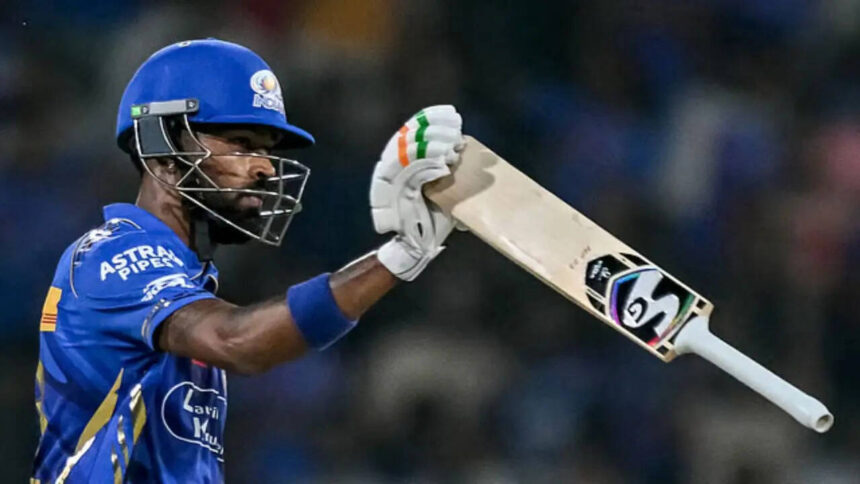Introduction
Hardik Pandya has redefined T20 cricket with his iconic no-look sixes, making clean, long-distance hitting look effortless. But behind this brilliance lies not just skill, but cutting-edge cricket technology — specifically, a curved bat engineered to optimize power and precision. The science behind this bat innovation, pioneered in India and rooted in physics, is revolutionizing the way cricket is played.
The Innovation: Curve Meets Physics
Modern cricket bats are no longer flat. The curve in Pandya’s bat plays a critical role in maximizing the sweet spot, enhancing the angle of contact, and ensuring that the ball travels farther when hit. This curve is not accidental; it’s a result of decades of R&D led by bat manufacturers like Sanspareils Greenlands (SG), in collaboration with scientists from IIT Delhi.
The 45-Degree Launch Angle: Physics in Action
The secret to long sixes lies in launch angle. According to the principles of projectile motion, a ball hit at a 45-degree angle with the right force will cover the greatest distance. A curved bat naturally assists in achieving this optimal angle, increasing the chances of clearing the boundary even against deliveries like yorkers.
Sachin Tendulkar’s Early Influence
The origins of the curved bat trace back to the legendary Sachin Tendulkar, who asked his bat-maker to replicate the ‘natural dent’ or sweet spot that developed over time with use. This curiosity led to the development of bats with built-in curvature — a subtle tweak that had a massive impact on the game.
Design and Craftsmanship: Machine Precision Meets Hand Finish
SG’s Arc series bats, including the ones Pandya uses, are machine-crafted to precision but finished by hand. This ensures each bat is finely tuned to a player’s personal weight and balance preferences. Pandya’s custom bats reportedly feature 200% more curve than standard models, enabling more forgiving sweet spots and increased lift on shots.
The Sweet Spot and Area of Percussion
Physics defines the sweet spot as the center of percussion, located slightly below the center of mass. When the ball strikes this point, energy transfer is maximized and vibration minimized, allowing for cleaner and longer hits. The curved surface extends this high-performance zone, giving batters more room for error and power.
Mass Production with Mass Appeal
Responding to Pandya’s request for accessibility, SG has introduced these curved bats to the consumer market, starting at ₹12,000. From producing under 100 bats a day, the SG factory now rolls out up to 1,200 bats daily, aiming for 5,000 in the near future to meet rising demand.
Beyond the Boundary: Curved Bats and the Future of T20
While skills and training remain paramount, the evolution of cricket equipment like the SG Arc series is giving modern players a competitive edge. For Pandya, it means clearing the rope without even looking — a true fusion of art and science.
Conclusion
The curved cricket bat is more than just a piece of gear — it’s a technological marvel driven by physics, player feedback, and innovation. As T20 cricket continues to evolve, expect more players to adopt this bat design in their arsenal. For fans, that means more sixes, more drama, and more no-look shots that defy belief but are grounded in science.


